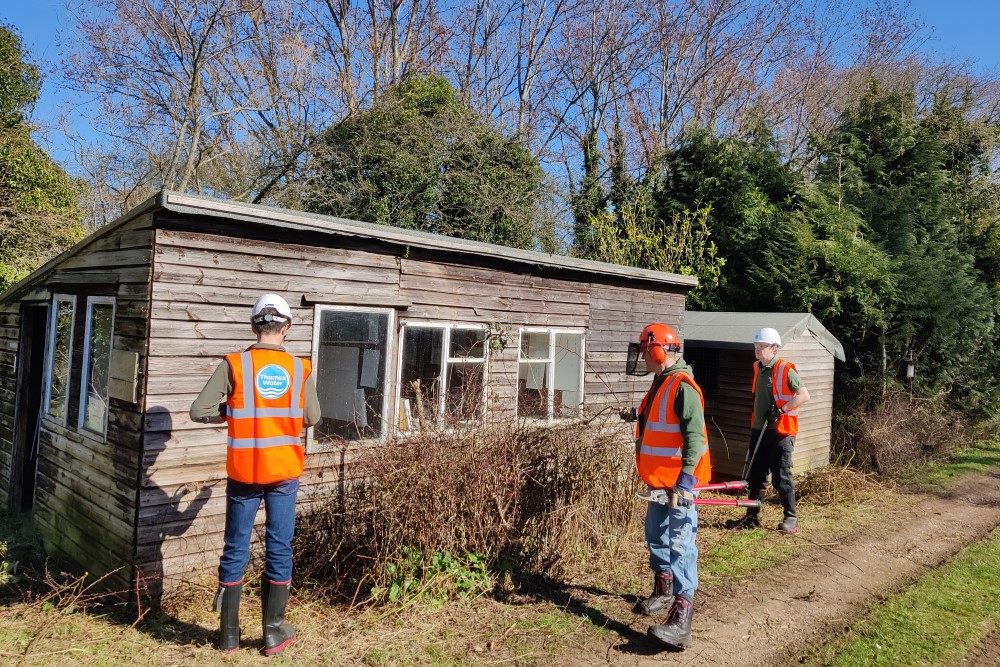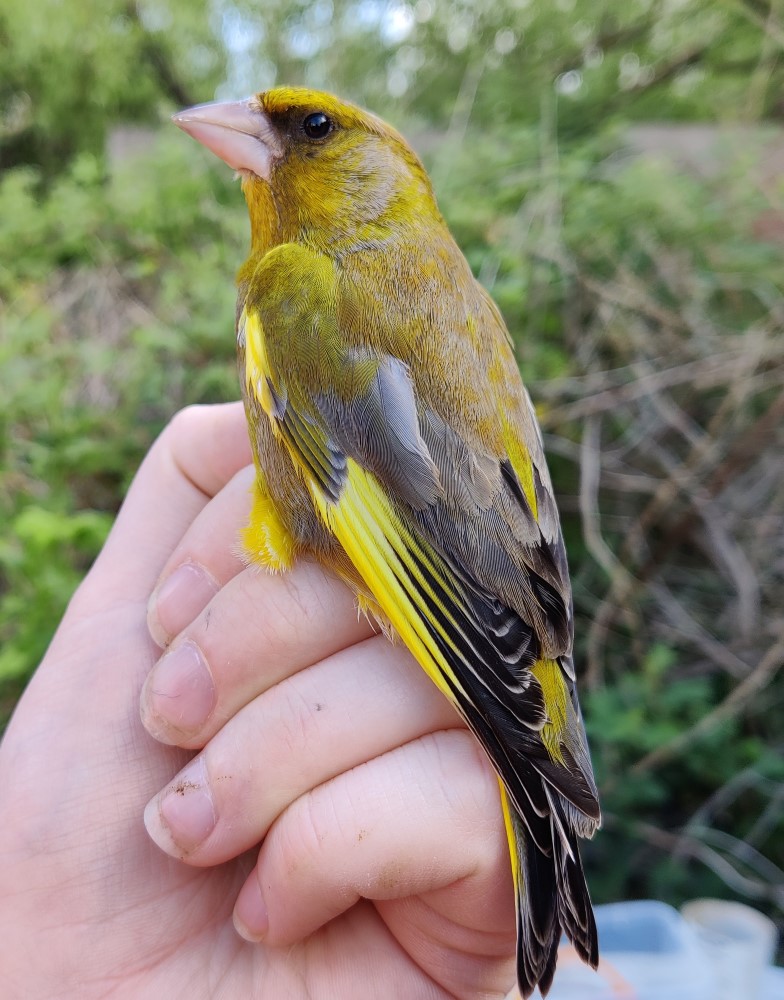Observations
March-April 2022 – Back in the South Lagoons!

For the first time since February 2020, we are allowed back into the South Lagoons to continue our interrupted ringing, observations and breeding survey work, and although Thames Water maintains its ban on access to the Works area, it is a big boost to our operations.
Not surprisingly, with the South Lagoons included for the first time in two years, wildfowl numbers show a boost over the previous counts, and in any case might be expected to reflect an increase as wildfowl are moving north. Peak counts included 159 Shovelers, 28 Teal, 29 Pochard and 34 Tufted Duck. One or two Shelducks were regular up to the middle of April then disappeared. One or two Red-crested Pochards in March became a regular one or two pairs in April. Will they breed? Watch this space… Finally Great-crested Grebes peaked at six.
Spring can be a good time for waders at Rye Meads, as various species start to head north for breeding. And so far this spring we’ve done OK in that regard.
First off the mark was a flock of 29 Golden Plovers which staged a fly-past; then a flock of ten Ruffs put in an appearance. The Godwits were a bit later: one Bar-tailed stayed for two days, followed by seven Black-tailed on one day in April.
The few wintering Green Sandpipers had dwindled to a single bird by late April, up to four Jack Snipe had ebbed away, and up to 18 Snipe reduced to the last pair in April, just as the first Little Ringed Plover arrived back, with up to three for the rest of the month, and a Common Sandpiper put in an appearance.
On to the gulls, where pride of place goes to the flock of five Little Gulls one day in March. There was a single Mediterranean Gull on two dates, whilst the gathering hordes of Black-headed Gulls were amassing with increasing excitement for the moment to occupy the rafts and start nesting.
Finally, the first Common Terns arrived back, with up to five by the end of April.
With just ten sightings in the past ten years, Red-legged Partridge isn’t exactly a Rye Meads iconic species. So the bird seen in March looks to have got this year’s record out of the way nice and early.
A male Marsh Harrier which hung around from six days raised hopes, but only a notch, so it wasn’t too much of a disappointment when it left. Otherwise the usual suspects were around in usual numbers – up to three Sparrowhawks, up to five Red Kites and up to seven Buzzards.
The first Cuckoo of the year was joined by a second bird shortly thereafter. The first Hobby of the year arrived at the end of April.
You could make a fairly decent argument that our next bird was the Bird of the Period: a Lesser Spotted Woodpecker found in the South Lagoons.
Let’s start the Passerines with the departing winter visitors.
Nine Redwings at the beginning of the period had dwindled to the final bird by the end of March. An unexpected count of 120 Fieldfares in early April was the only record in the period. There were just two records of Meadow Pipit and two of Water Pipit. The only other winter visitor logged was Siskin, with two counts of nine and six birds.
All change: here come the summer visitors!
Of the hirundines, Sand Martin arrived first as usual: eleven birds at the end of March, but only two other records. Surprisingly, House Martin was next, and Swallows brought up the rear with up to 18 birds by the end of the period. No chats were recorded in the period, but a single Yellow Wagtail was a welcome find. As for the warblers, first past the post – well, on top of a bush – was Willow Warbler, with one in mid April the only sighting of the period. Next to show was Sedge Warbler, then Whitethroat came in third. The also-rans were Reed Warbler and Garden Warbler on the same mid-April day.

You could of course argue that Chiffchaff and Blackcap had the race sown up because some birds had stayed for the winter. There were single Chiffchaffs from the beginning of March, which grew rapidly to 19. Meanwhile odd single Blackcaps in March grew steadily until there were signs of a real influx mid-April with 45 counted.
And as for our residents…
There were four Ravens on two days in March – record counts for Rye Meads – and singles or a pair on several other dates. 87 Starlings was the only significant count of the period. That Rye Meads rarity, House Sparrow, chirped at the Centre on three dates in March.
Notable counts of seed-eaters included 29 Chaffinches and 42 Yellowhammers. There were up to four Linnets from late March onwards – breeding hopes perhaps? – and signs of a few Greenfinches perhaps moving through with up to eleven birds on a few dates. It’s hard to believe now that back in the 1990s and 2000s we regularly used to ring 100-200 Greenfinches on passage in the spring! Cue outbreak of nostalgia amongst the more senior ringers (which is most of us)…
